I’m an unbelievable sucker for cinematic puzzle platformers. Limbo, Inside, Little Nightmares…those games truly hit like crack to me. Even the kinda boring ones like The Cub or Bramble: The Mountain King, games I straight up don’t enjoy, still work a little bit for me. There’s something about playing through a carefully designed series of set-pieces where the intent is to elicit a specific emotion in the player that I enjoy; it’s rare for games to be so explicitly directed, so I appreciate it in that sense as a creations with clear intents and visions.
That being said, it does take a deft hand for games like this to work. Like I said, despite its bright moments, I didn’t enjoy The Cub, mainly because it felt a little awkward in its delivery. The pacing was kind of insane, and the game lacked confidence in its ability to tell its story organically, so it ended up feeling somewhat hollow by the end. I wrote a whole review about it if you’re curious!

Far: Lone Sails released at a time when these kinds of games were at the peak of popularity. Not long off the release of 2016’s Inside, there was a clamouring for these cinematic, light-puzzle experience games, most of all from me. Despite this, Far is a series which somehow managed to pass me by, despite how closely it skews to my specific interests. I’m not sure why that was the case; perhaps I was neck deep in my commitment to not doing university work, or I was just preoccupied with other games. Regardless, I made my way to its doorstep eventually, and what greeted me at the entrance? A pretty good game!

Not crazy good though, just pretty good. My expectations weren’t especially high for it necessarily, and those were at least met, so I’m satisfied. It follows the tale of a kid going on a perilous journey across what looks to be an apocalyptic wasteland, where all water seems to have mysteriously disappeared. That’s not something I would normally notice in a game, but it becomes especially obvious when your main mode of transport is a boat on wheels, powered by an engine or propelled by wind.
The vehicle design is really unique, and easily one of the best aspects of the game. Not such from an aesthetic standpoint either; the interior is also carefully crafted to be easily navigated. It strikes a nice balance between being small enough to get around in without fuss, but large enough to feel as though your little controllable child is way out of their element, dwarfed by this machine clearly not built to be piloted by one so tiny.
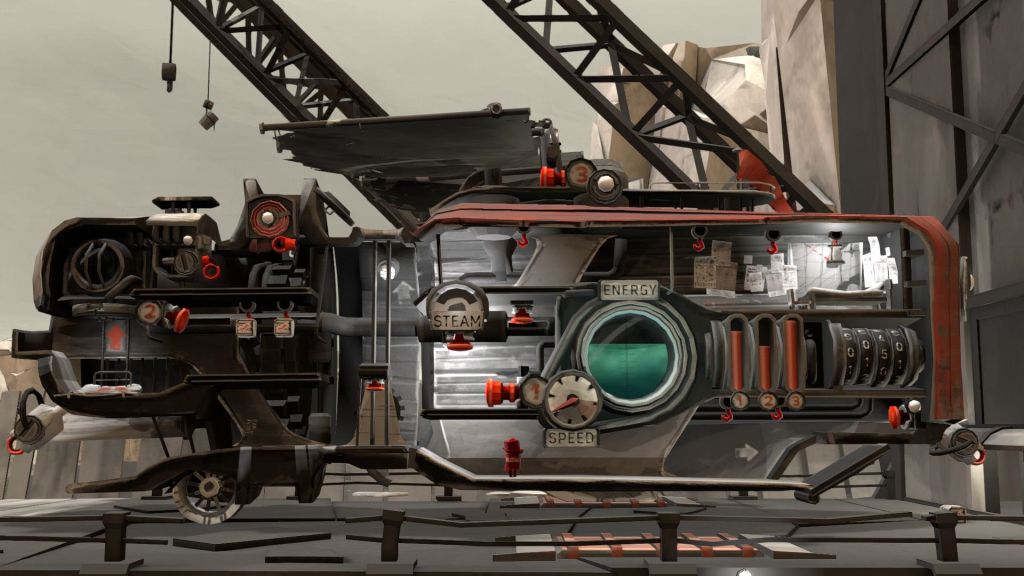
But pilot they must! Much of the core gameplay in Lone Sails is about fuelling and maintaining your vessel, trying to get it to whatever destination lies at the end of this journey. The loop involves scavenging for fuel – typically boxes or random junk you find on the road – dropping it in the engine, and watching that the engine doesn’t get overloaded with steam which can lead to fire damage if you’re not careful. It sounds simple, and it is, but it’s a surprisingly engaging loop that’s often complicated by minor elements, so it never gets too stale.
If there’s wind, you hoist the sails and let the vessel ride all on its own. This usually requires virtually no input, allowing for some quiet time to bask in your surroundings. In a way, this is a very zen-like experience once you have the routine down. I quite enjoy it, even if it started to stretch a little thin by the end. Fortunately, the game is only around 2 hours max, so it’s hard to ever call it boring.
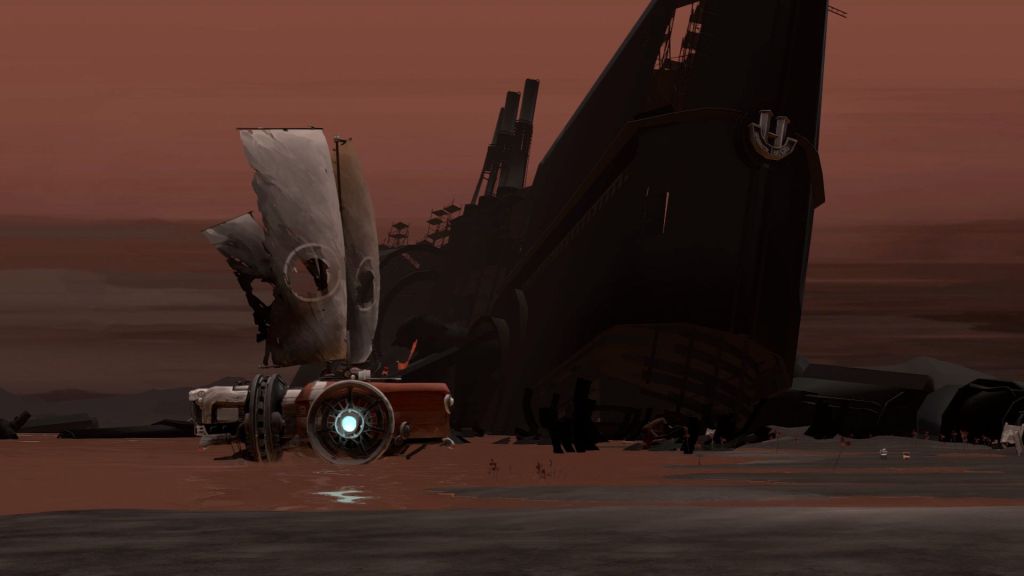
What helps is the phenomenal soundtrack, composed by Joel Schoch. I find myself coming back to it a lot in my commute to work, which goes to show how perfect it is as a journeying anthem. Lone Sails has a very unique sound to it, quite bouncy and energetic in the way it builds in complexity over time. The opening track, ‘Colored Engine’, evokes the trepidation of setting out on this new adventure, and the introduction of more and more instruments, as if the music itself is revelling in the excitement of the player slowly beginning to grasp the mechanics and building their confidence over time. I like the way tracks don’t play very often, meaning when they do, it always feels special. Sometimes the music even contributes to the sound design, such as with the track ‘Disorientated’, which incorporates plucking strings to simulate the battering of hail against the roof of your vehicle. I’m no music scholar or whatever, but I do think it’s neat!
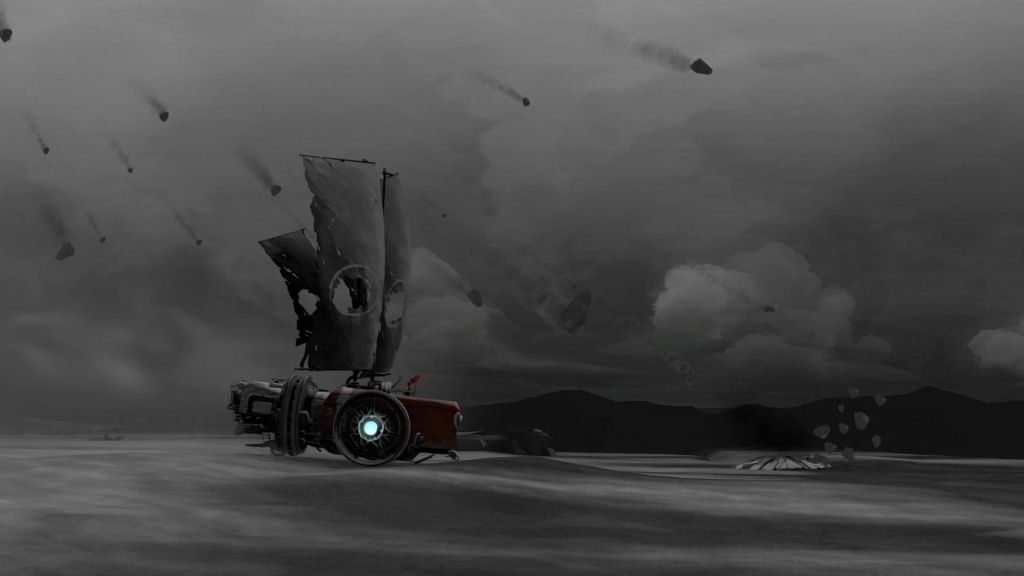
And…that’s about all I have to say about Lone Sails. It’s a really cool, vibey experience that I’d happily go back to someday, but also feels like it’s only scratching the surface of its potential. It’s the perfect length for what it is, but I was left wanting more, not because the first didn’t do enough, but rather I could see how a sequel might build upon it. Enter Changing Tides, developer Okomotive’s second game, which blew me out of the water.
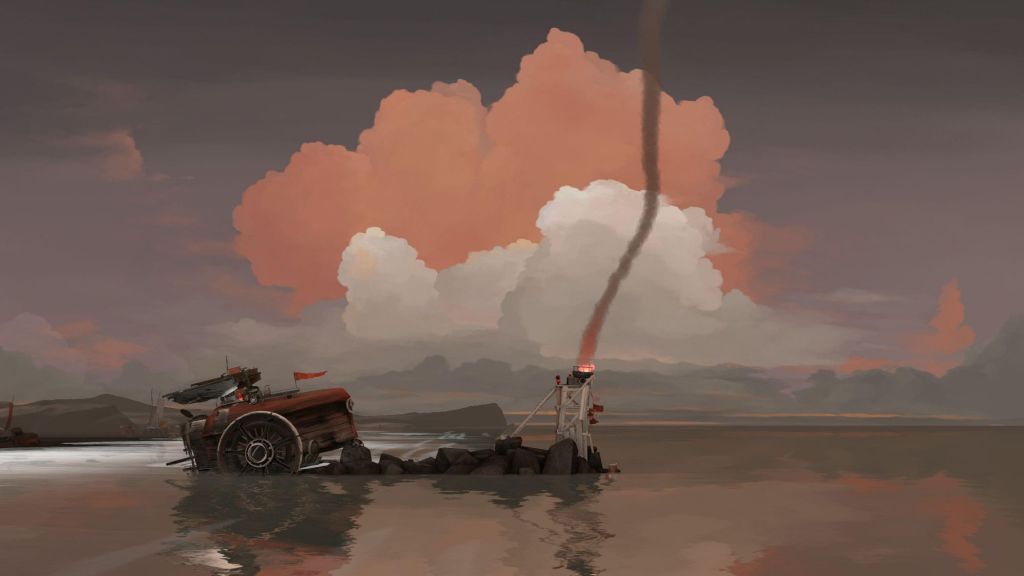
Changing Tides is interesting because initial impressions by me were sceptical. It’s not that I didn’t think they could pull it off, so to speak, but the main gameplay conceit felt like a step back of sorts. From the team that brought you Boat On Land, here’s: Boat On Water??? I wasn’t convinced right away.
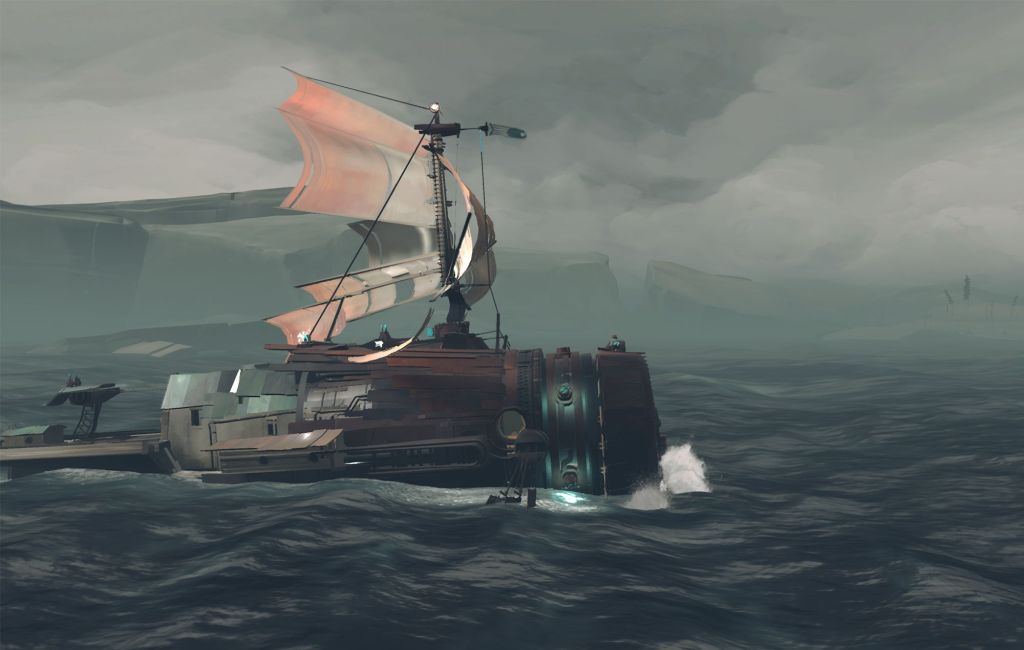
That being said, there are a lot of tweaks to the vessel piloting mechanics that I enjoyed. For one, travelling by sail is a little more involved now, asking the player to pay attention to wind direction and move the sail to match it for maximum speed. I enjoyed that aspect of the game, especially when I was so wrapped up in watching the wind that I’d often send my ship crashing into barricades, buildings and cliffs because I wasn’t focused up. Also, because the mast swings at a 180° radius, you have to be mindful of background objects too which can damage the sails.
Piloting with the engine is a little different too. You’re still feeding fuel into an engine as usual, but the thing doesn’t run itself anymore. Rather, you have to jump up on one of those air pump things fireplaces tend to have, in order to build up speed (edit: I looked it up, it’s called a ‘bellows’. Weird name!). However, pump the engine fires too much and your engine is at risk of overheating, so you need to be mindful of that too. There’s a water pump too which I’d originally assumed was for fires, like the extinguisher in the first game, but it turns out to work as a way of cooling the engine if it gets too warm, a mechanic that wasn’t explained but I just intuited.

There’s more to think about in the minute-to-minute experience of Changing Tides, but also more ways to go about getting from point A to point B. The equipment of the vessel and mechanics of getting it moving have a dynamism to them that encourages individual problem-solving rather than falling into a specific routine, which I found pretty cool and made the overall experience more engaging as a result.
It was a necessary change given that Changing Tides is more than twice the length of its predecessor. I was aware of this going in, having looked up the runtimes of both games, but having played the first, I was sceptical. Was this going to be an example of yet another game falling victim to scale creep? I’ve already complained in other recent posts about my current distaste for games that far outstay their welcome, so I was expecting more of that same disappointment.
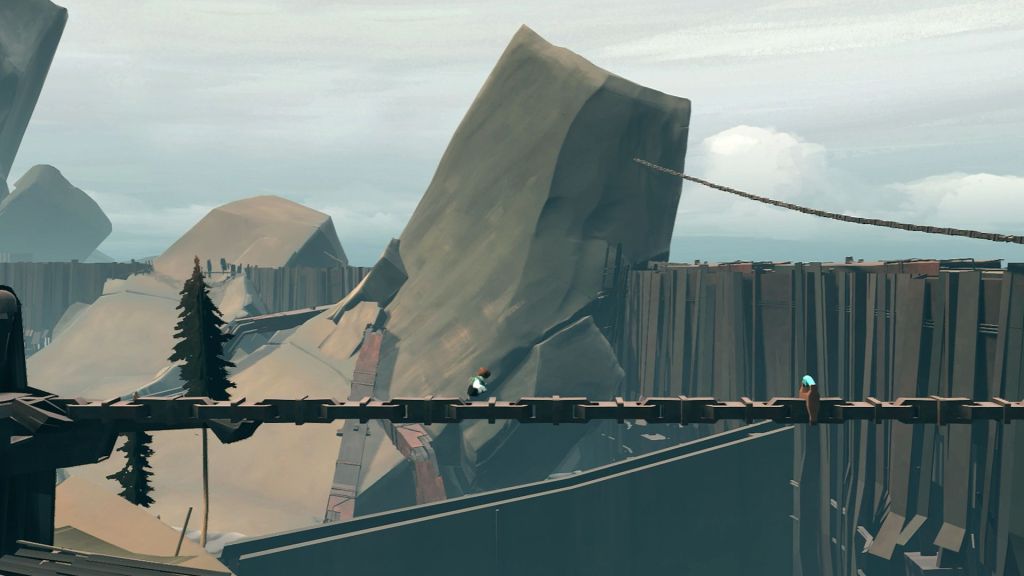
However, it turned out that Okomotive recognised the dangers and steered clear of them with the oldest navigational trick in the book: include more features. Not only can your vessel use sails or an engine for traversal, but it can also operate as a submarine, creating an entire new layer of exploration to account for. This answered a question I had near the start, when it was clear that the player could not only swim, but dive with ease, leaving me to wonder about the inclusion of an entire other half of the game world, hidden under the water, seemingly ignored by the game’s mechanics. The introduction of the submarine clicks all those disparate puzzle pieces into place, and realising that was pretty awesome.
To not only be surprised by Changing Tides, but have it surpass my expectations of its capabilities, was so cool. In fact, this game is full of little ‘wow!’ moments that I appreciated. The moment I hooked up a new part I’d used in a separate puzzle and activated it, only to see my floating vessel *submerge* was like a shot of pure magic into my soul. Another was when I came across a waterfall I had no way of scaling, and after getting stuck for a while, I eventually tried hooking it up to a strange device only for the vessel to soar into the sky, over the rapids and above the clouds. The ending fits this too, though I won’t spoil it here because it’s really cool and sweet, and not what I’d expected at all. The entire game is littered with these little surprising moments that made me feel like what the Far games are about: a little kid going on a grand adventure.
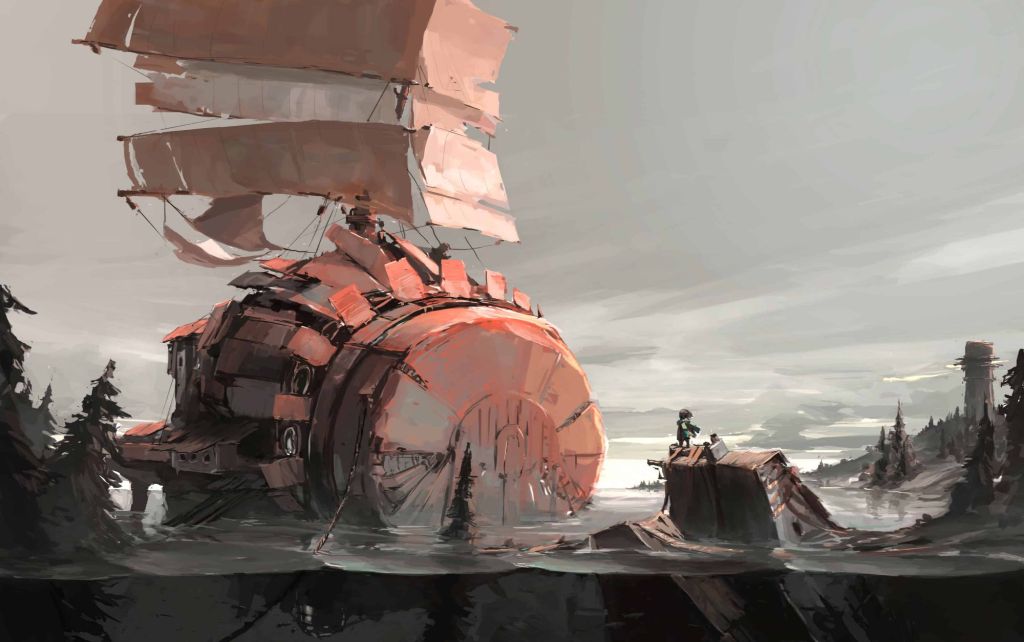
I wasn’t expecting it, but Lone Sails and Changing Tides have nestled themselves into my heart. They’re a pair of gorgeous and unique games about exploring a vast stretch of land on your cool vehicle, and the little moments of beauty that exist within. They’re lonely experiences in a way, but they also show how there’s value in those periods of our lives. Life is an unknowable wasteland we often have to traverse alone, but finding magic along the way is what makes that journey worthwhile. Then, at the end of it all, you can find someone to pass those stories along.
★★★★☆

Leave a comment